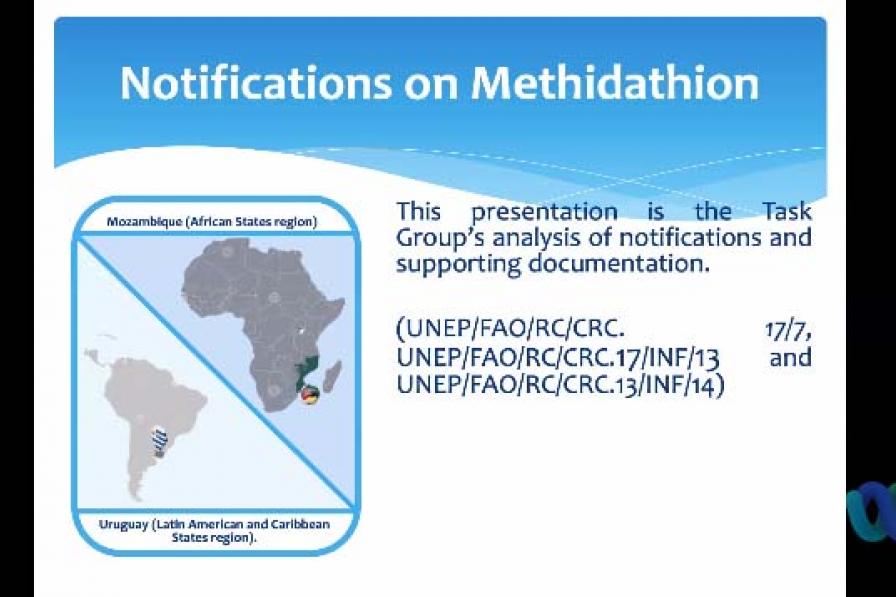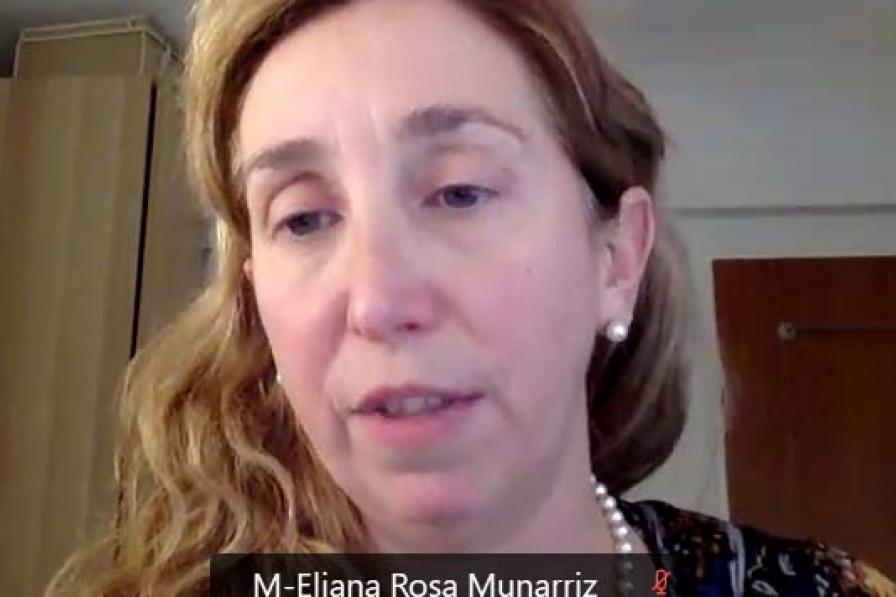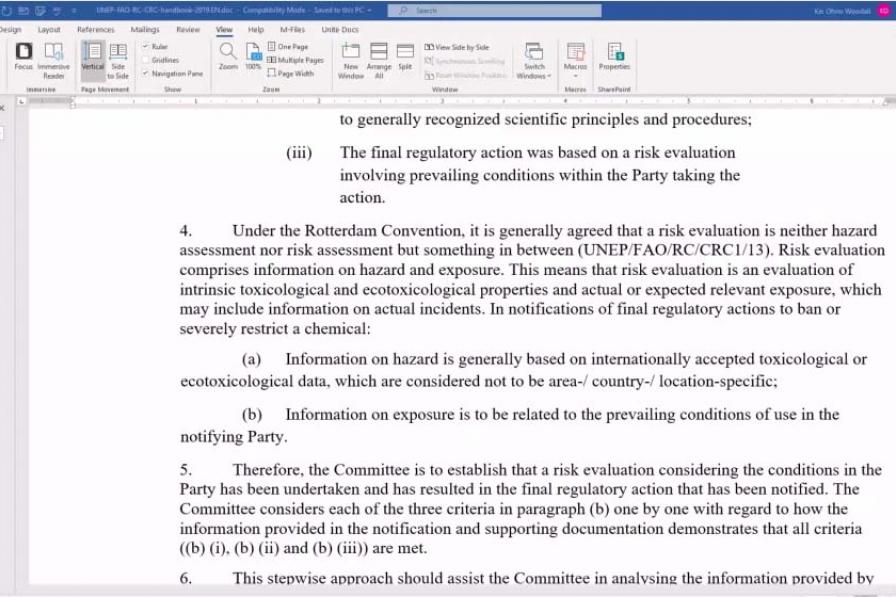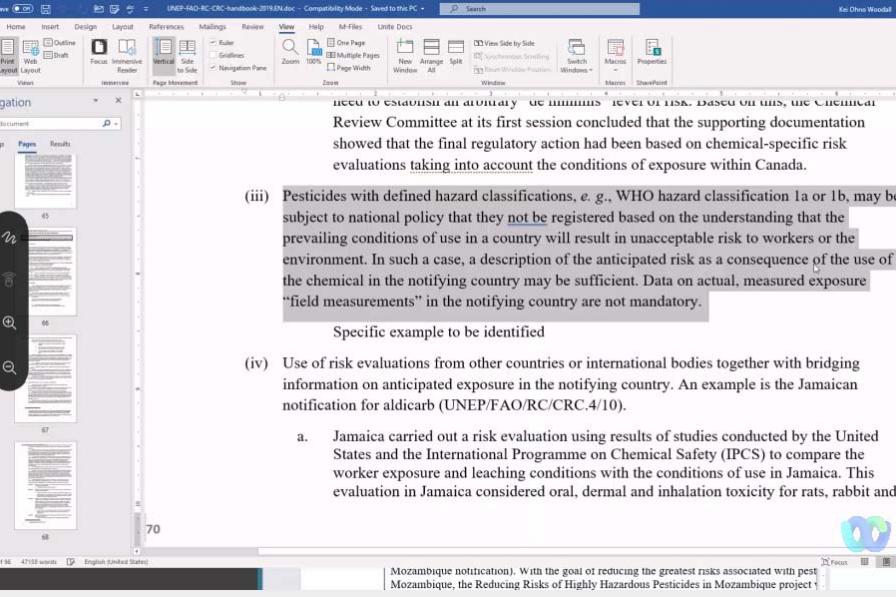The question of what, exactly, constitutes a risk evaluation dominated the Chemical Review Committee’s (CRC) discussions on Tuesday. The Committee started the second day of its meeting with a presentation from the intersessional Task Group on the pesticide Methidathion, which is used to control caterpillars on crops. While the Task Group concluded that the notifications of final regulatory action submitted by Uruguay and Mozambique fulfill the Annex II criteria for listing banned or severely restricted chemicals under the Rotterdam Convention, several members and observers raised concerns about both notifications, particularly with regard to the validity of the risk evaluations in Mozambique’s submission and the risk evaluation tool employed by Uruguay. The concerns regarding Mozambique’s notification overlapped with those raised in Monday’s discussions of Terbufos, Thiodicarb, and Iprodione.
Acknowledging the divided views on this issue, CRC Chair Noluzuko Gwayi suspended plenary to allow participants to gather in a contact group on common issues across the notifications from Mozambique. This group, co-chaired by Timo Seppälä (Finland) and Christian Sekomo Birame (Rwanda), was mandated to discuss whether the four chemicals addressed thus far meet the criteria of Annex II, paragraph b(iii), which specifies that: “The final regulatory action was based on a risk evaluation involving prevailing conditions within the party taking action.”
The contact group convened for several hours in the afternoon and evening (UTC +2), but was unable to reconcile the views of participants. Those who opposed accepting the notifications called for additional data, including on, for example, exposure to specific substances and patterns of overuse. Several members questioned whether the survey of farmworkers submitted by Mozambique, which considered general uses of agricultural chemicals rather than specific pesticides, was sufficient for a risk evaluation. Others questioned whether Mozambique has implemented a national policy to address these specific substances. One observer said there is no evidence that improper use of pesticides is resulting in exposure levels that would pose risks to human health and the environment, and said hazard information plus improper use do not constitute a risk evaluation.
Several emphasized that the risk evaluation that was conducted is simple but meets the Annex II criteria, underscoring that risk evaluations are not as stringent as risk assessments. Several noted, for example, that the notifications contain information on hazards to human health, that this information triggered next steps at the national level, and that the survey was a socioeconomic study that demonstrated that farmers and farmworkers in Mozambique do not have the capacity to appropriately use pesticides that are hazardous to human health. One participant reminded the CRC that the Rotterdam Convention is designed to facilitate information exchange, not ban chemicals, and expressed concern that calls for more stringent data than is required by the Convention will create barriers to participation in the PIC process for low- and middle-income countries.
After lengthy discussions, contact group Co-Chair Seppälä noted that it would not be possible to reach consensus in the contact group and adjourned discussion. Participants will reconvene in plenary on Wednesday.
To receive free coverage of global environmental events delivered to your inbox, subscribe to the ENB Update newsletter.











